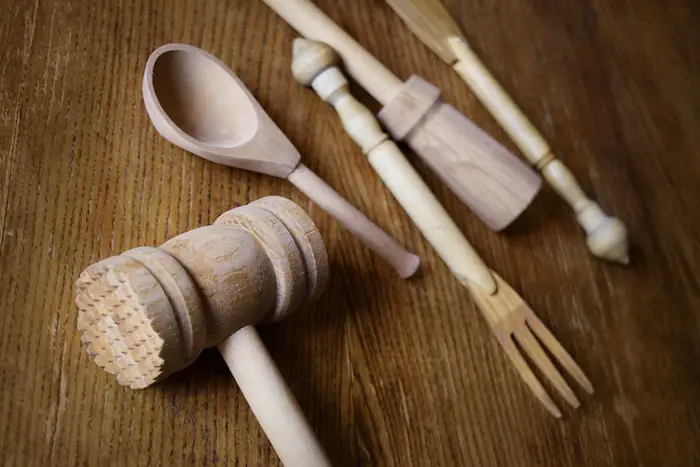Doing laundry provides a certain coziness for some people, and to be able to do it in a carpeted space as opposed to a cold, dank space adds another level of coziness to the task, which may cause you to wonder, can you put a tumble dryer on carpet?
Unfortunately, putting a tumble dryer on carpet is not recommended because it does pose certain risks that can cause the carpet, or in some cases, even the dryer itself, to ignite.
Tumble Dryers and Carpet
Tumble dryers, whether it is a heat pump or condenser tumble dryer, contain various heater elements that, when the dryer is in use, get very hot. In fact, the dryer exhaust duct alone can get as hot as 85 degrees Celsius, even hotter if the dryer is overheated, while the dryer is running. Couple this with the fact that some carpeting, especially shag carpeting, can be highly flammable, which, when placed in contact with the dryer’s intensely hot dryer parts, can be a recipe for disaster.
Lint is also sometimes known to accumulate on the back of the dryer where it can become hot while the appliance is in use, which can fall off and land on the carpet and cause it to burn.
Traditional condenser dryers also pose a risk to carpets because they accumulate their share of moisture, which, when placed on carpeting, can allow the moisture to leak from the dryer and onto the carpet, causing it to become wet, which in time can cause mold to grow on the carpet. Moldy carpet can not only cause your space to have a musty or mildew smell, but it can also pose certain health risks.
Both heat pump tumble dryers and condenser tumble dryers also require adequate ventilation to prevent heat buildup in the dryer, which can cause it to overheat; therefore, they need to be installed in spaces with low heat retention. Carpet retains heat, which means, when it is placed in a space with a heat source that is capable of producing high heat, such as a tumble dryer, it can cause the space to become extremely hot, which can also cause the dryer to retain heat.
Some tumble dryers also have vents on the back of them that are located at the very bottom of the dryer, which means it can become blocked or smothered by thick carpeting, which can also cause the dryer to retain heat and thus get too hot.
Therefore, putting a tumble dryer on carpet is typically not recommended for various safety reasons.
Related Article: Can You Put A Mini Fridge On Carpet?
More Tumble Dryer Safety Tips
Always Install Your Tumble Dryer on a Fire-Resistant or Water-Resistant Surface
If you must place a tumble dryer on carpet, be sure to place a piece of water-resistant or fire-resistant material underneath the appliance to help keep it well ventilated and to also avoid the risk of fire or water damage to the carpet.
Keep the Dryer Lint-Free
Keeping the dryer filter lint-free also helps reduce the risk of fire. Otherwise, lint is flammable; therefore, if it is left to build up in the dryer filter, it can become too hot and eventually catch on fire. Or, after a while, the lint can make its way up into the duct, where it can also become too hot and ignite.
Keeping your lint filter clean also helps your dryer run more efficiently, which helps save money because lint build-up causes the appliance to work harder and longer, which costs more run it. However, a well-ventilated dryer doesn’t have to work as hard; therefore, it helps sustain lower energy costs. Therefore, clean the filter at least once a week, depending on how much you use the dryer. Some tumble dryers also have a reminder light to let you know when it is time to remove the lint.
To clean the lint filter, which is usually located either on the top of the unit or inside the door, remove the filter, and then using your fingers, scrape away the lint. You can also run the filter under water to rinse it completely clean. However, just be sure it is completely dry before placing it back in the dryer.
Do Not Put Certain Items in the Tumble Dryer
Oil stains, such as from wiping up cooking oil spills or that accidentally splash onto your clothes while cooking are very flammable, which means when you put these oil-soaked items into the dryer, the intense heat from the dryer can cause the oil to burst into flames.
Once these items ignite, it can cause the other clothes in the dryer to also catch on fire, resulting in a severe fire. Therefore, instead of simply placing any flammable soaked clothes into the dryer, be sure to place them into the washer first, using the highest heat setting, to thoroughly remove any oil residue from the items before placing them into the hot dryer where they can cause a fire.
You should also avoid overloading items in your dryer, as it prevents the air from circulating properly, which can cause your appliance to become overworked and overheated, thus increasing your energy costs and also decreasing the lifespan of your dryer.
How you load the dryer can also cause it to become too hot. For instance, loading the dryer with a mixture of both light and heavy items can prevent the items from being evenly tossed around the tumbler, which prevents the dryer from working efficiently, thus putting extra stress on the appliance and causing it to become overheated.
You should also only dry your clothes using the appropriate fabric setting to help prevent your dryer from becoming overworked.
Installing Your Tumble Dryer in Areas With Too Low Little Heat Can Also Cause Problems
Just like your tumble dryer can be installed in areas that are too hot, which can cause the dryer to retain heat and overheat, the same holds true for installing the dryer in areas of extreme cold.
When tumble dryers are installed in areas subject to very low temperatures, such as unheated outbuildings, especially during the winter months when temperatures can drop extremely low, it interferes with the dryer’s ability to allow the water to condense in the dryer’s condenser, which instead causes the water to begin to condense onto other cold surfaces, which in turn causes the clothes in the dryer to get only slightly warm.
For a condenser tumble dryer to work properly, it must be at least 5 degrees Celsius. This means, when it is installed in an area with temperatures lower than this, it will either cause the dryer to not get as hot as it should, or some models may even stop working altogether because they are programmed to not operate in frigid temperatures, which can result in a faulty dryer.
Related Questions
What is the Best Way to Vent My Tumble Dryer?
Tumble dryers work by taking in cool air and then releasing the air once it is warmed, so in order for the dryer to work efficiently, it needs to be in a space that enables adequate airflow. Therefore, it is not good to place the dryer in a confined space with a limited supply of fresh air, such as in a cupboard.
Instead, the tumble dryer should be installed in a room that has at least 3m2 of space, which will allow for a good air supply. And if your chosen space contains a door, it should also be left open while the dryer is in use to encourage proper airflow. You could also open the window in a nearby room to help increase circulation. Otherwise, you risk the dryer recirculating hot air back into it, which can cause it to overheat.
Is It Okay to Leave My Tumble Dryer On When I’m Not Home?
As stated earlier, tumble dryers contain heater elements that are capable of becoming extremely hot when the dryer is in use, which always poses a risk.
However, leaving your appliance running when you are not home, increases this risk because should these hot elements come in contact with a flammable object, such as lint, it can cause a fire. You are not at home to monitor the unit or to quickly shut it off should a problem occur. Therefore, you should only run your tumble dryer when you are at home, so it is safe.
See Also:
Can You Put Lululemon Leggings In The Dryer
4 Best Tumble Dryers To Avoid Ironing
How To Clean An Alpaca Blanket
Source: https://www.beko.co.uk/support/faqs/tumble-dryers/how-to-use-and-maintain-a-tumble-dryer


